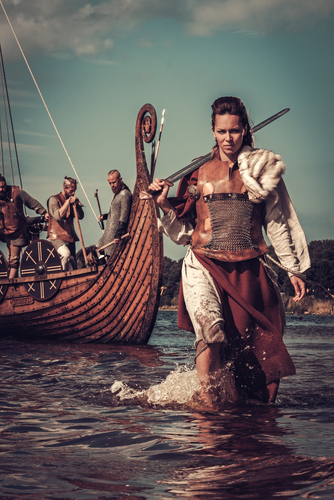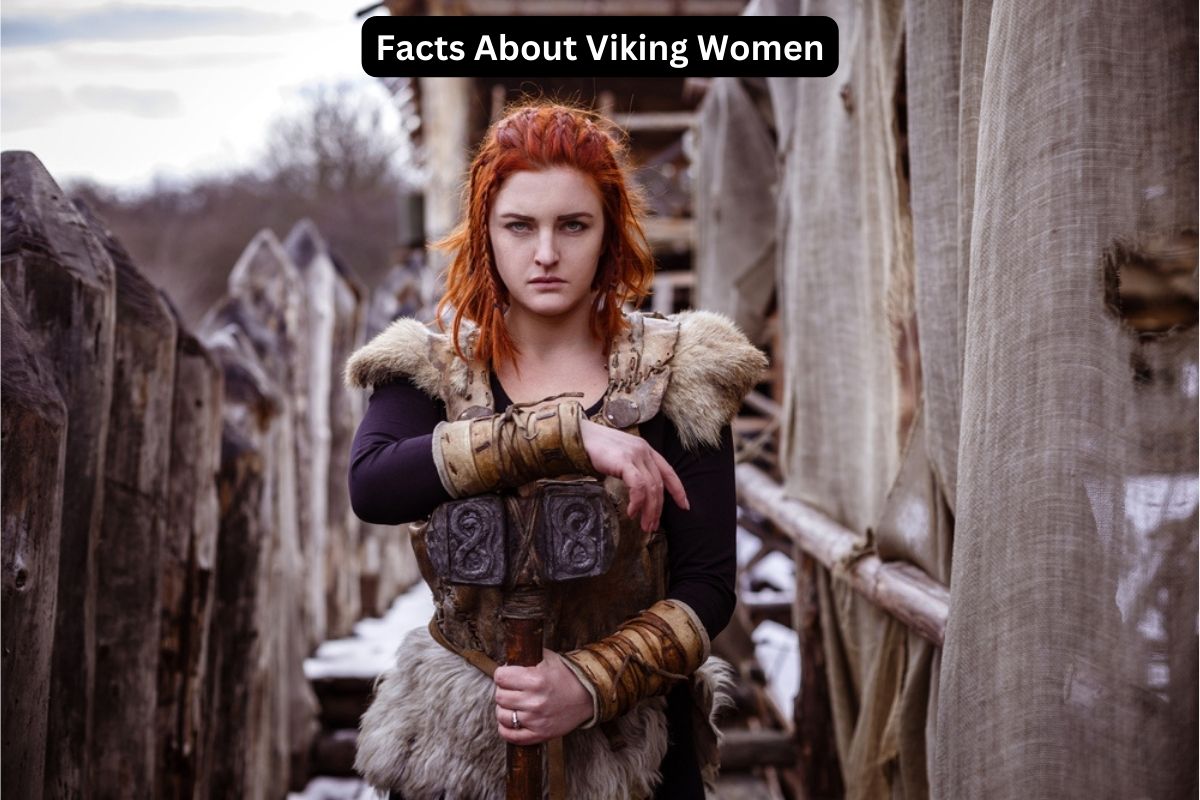Viking women, often overshadowed by their male counterparts in popular history, played essential and multifaceted roles in Norse society during the Viking Age, which spanned roughly from the late 8th century to the early 11th century.
These women were not limited to traditional roles but were engaged in various occupations, enjoyed legal rights uncommon for their time, and, in some cases, even participated in warfare.
This brief introduction sets the stage for a deeper exploration of the diverse and significant contributions of Viking women in their complex and vibrant culture.
Viking Women Facts
1. Varied Occupations
Viking women were not confined to traditional gender roles. They engaged in a wide range of occupations that were essential to their society’s functioning. These included farming, which was a fundamental part of Norse life.
Also Read: Vikings in England Timeline
Women were responsible for planting and harvesting crops, tending to livestock, and managing household affairs. In addition to agriculture, they played crucial roles in craft production, such as weaving, spinning, and textile manufacturing.
These skills were not only vital for personal use but also for trade, as Viking women’s crafted goods were highly sought after.

2. Legal Rights
Viking women enjoyed relatively progressive legal rights for their time. They had the ability to inherit property, including land, and were recognized as legal entities in their own right.
Also Read: Leif Erikson Facts
This meant that they could enter into contracts, engage in trade, and participate in legal disputes. Viking women also had the right to divorce their husbands, although the process was typically more straightforward for men.
These legal rights reflected a level of gender equality that was uncommon in many other medieval societies.
3. Shieldmaidens
While Viking women’s participation in warfare was not as common as men’s, there is evidence to suggest that some women did indeed become warriors, known as shieldmaidens.
These women were skilled in combat and often accompanied Viking raiding parties or defended their homesteads when necessary.
Accounts in sagas and historical records mention women like Lagertha and Æthelflæd, who were renowned for their martial prowess.
However, it’s important to note that shieldmaidens may have been the exception rather than the rule, and the extent of their involvement in warfare is still a subject of scholarly debate.
4. Matrilineal Descent
Viking society placed significant importance on family and kinship, and one intriguing aspect was the emphasis on matrilineal descent.
Unlike many other cultures of the time, where lineage was traced through the male line, the Norse people often traced their ancestry through the maternal line. This meant that a person’s mother played a central role in determining their social identity and inheritance rights.
Matrilineal descent reinforced the significance of women within the family and helped maintain connections and alliances between different kinship groups.

5. Craftsmanship
Viking women were highly skilled in various forms of craftsmanship. Textile production, including spinning, weaving, and dyeing, was a vital part of their daily life.
Women would produce clothing, blankets, and other textiles for their families. In addition to textiles, Viking women were proficient in pottery-making and jewelry crafting.
These crafts weren’t just for personal use; they also contributed to the broader economy as women would produce goods for trade, strengthening their family’s financial stability and contributing to the Viking Age’s thriving trade networks.
6. Religious Roles
Viking women played essential roles in religious practices and rituals. They could become priestesses or seeresses, serving as intermediaries between their community and the spiritual world.
These women conducted religious ceremonies, offered sacrifices, and performed divinations to provide guidance and insight.
Their spiritual duties were integral to maintaining the Viking belief system, which included deities like Odin, Thor, and Freyja. As keepers of religious traditions and knowledge, these women held considerable influence within their communities.
7. Runic Inscriptions
Runes were an ancient system of writing used by the Norse, and they were often inscribed on various objects, including memorial stones and personal items. Some runic inscriptions from the Viking Age mention women by name, commemorating their lives and achievements.
These inscriptions provide valuable historical evidence of the roles and status of women in Viking society. For example, some runestones may honor women for their contributions to their families or communities, highlighting their importance.

8. Viking Age Ships
Viking women were associated with the maritime culture of their society. While men were typically the primary seafarers and warriors, women were not entirely disconnected from this aspect of Viking life.
Some Viking women were buried with ships, indicating a symbolic connection to seafaring and perhaps their roles in supporting or participating in trade activities.
These ship burials signify the importance of maritime endeavors in Viking culture and the recognition of women’s involvement in this sphere.
9. Trading
Trade was a significant part of Viking society, and women played active roles in this economic activity. They would often accompany their husbands on trading voyages, assisting with negotiations, managing finances, and ensuring the success of these ventures.
Viking women’s involvement in trade was crucial for the economic well-being of their families and communities, as the Vikings established extensive trade networks that stretched across Europe and beyond.
10. Social Status
The social status of Viking women varied based on factors such as wealth, region, and specific circumstances. Women in wealthier families generally had more freedom and influence within their communities. They could inherit property, manage estates, and exert considerable control over household affairs.
In contrast, women in less affluent households may have had fewer opportunities for economic and social mobility. However, compared to some contemporary societies, Viking women enjoyed relatively more freedom and autonomy.
